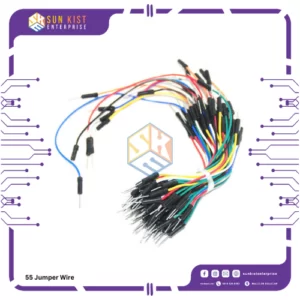Description
A “Flex Sensor 2.2 inches” is a type of flexible sensor that measures the degree of bending or flexing. The “2.2 inches” refers to the length of the sensor, indicating that it is 2.2 inches long. These sensors are designed to change their resistance as they are bent, allowing you to monitor and detect the degree of flexion. Here are some key features and information about flex sensors:
1. **Flexibility:** Flex sensors are constructed using flexible materials, such as a thin film or substrate, which enables them to bend or flex without breaking. They are often used in applications where monitoring the angle or degree of bending is essential.
2. **Resistance Change:** When a flex sensor is bent, its electrical resistance changes. The resistance typically increases as the sensor is bent, and decreases as it returns to its original position.
3. **Analog Output:** Flex sensors are analog sensors, and the resistance change can be converted into an analog voltage signal using a voltage divider circuit. This signal can then be measured using analog-to-digital converters (ADCs) in microcontrollers or other electronic devices.
4. **Length:** Flex sensors are available in various lengths, such as 2.2 inches, 4.5 inches, 12 inches, and more. The choice of length depends on your specific application requirements.
5. **Mounting:** Flex sensors can be mounted using adhesive or other attachment methods, and they are often placed on a surface that needs to be monitored for bending.
6. **Applications:** Flex sensors are used in a wide range of applications, including robotics, medical devices, human-computer interaction, gaming peripherals, virtual reality systems, and more. They are especially valuable in applications where detecting and responding to physical movement or deformation is important.
7. **Calibration:** Calibrating a flex sensor may be necessary to convert the resistance change into a meaningful measurement in degrees or other units of flexion. The calibration process involves recording the sensor’s resistance values at specific bending angles.
8. **Interfacing:** To use a flex sensor, you typically need to connect it to a microcontroller or other electronic device using appropriate interfacing methods and analog-to-digital conversion techniques.
Flex sensors are versatile and can be integrated into a variety of projects that involve monitoring and responding to bending or flexing. The specific application will determine the sensor’s placement, calibration, and signal processing requirements.






Reviews
There are no reviews yet.